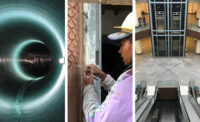Since subsurface utility maps are so essential to reducing risk on many construction jobs, research continues to improve buried-utility detection and mapping tools.

Several concepts were showcased at a conference produced by FIATECH, an industry consortium working to improve project delivery through technology, in Phoenix in late April.
One presenter, James Anspach, chairman of the American Society of Civil Engineers' codes and standards committee, noted that the U.S. has trillions of dollars invested in some 20 million miles of known, buried utilities. “Existing utilities create a lot of project risk,” Anspach says. “We don't think about it as our risk—it's the contractor's, the utility owner's or the project owner's—but in reality we all carry some of those risks.”
While ground-penetrating radar has led to improvements in locating and mapping buried utilities, radar does not work in all soil types and requires highly trained data interpreters. Those limitations led the National Academy of Sciences to hire Underground Imaging Technologies, Latham, N.Y., to develop a seismic sensor system that can work in clay-type soils not conducive to GPR, says Gary Young, senior vice president with the firm.
The seismic sensor is part of a three-sensor array that also includes electromagnetic sensors and GPR. All three outputs are coordinated with software that gathers, processes and interprets the data.
Due to the potential of UIT's research, equipment manufacturer Caterpillar acquired the firm last year. “One of the ideas when they bought our company was to take the 3D data that we gather and put [it] right on the excavator displays so that the operator can see what he's facing and avoid it,” Young says.
The technology could lead to operator warning systems.One possibility would automatically shut down a machine when it gets too close to a buried utility.




